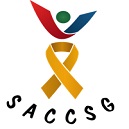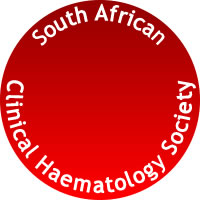Original Research
Determinants of survival in children with cancer in Johannesburg, South Africa
Submitted: 28 July 2021 | Published: 29 October 2021
About the author(s)
Nadia Beringer, Department of Paediatrics and Child Health, Faculty of Health Sciences, School of Clinical Medicine, University of the Witwatersrand, Johannesburg, South Africa; and, Department of Paediatrics, Division of Paediatric Haematology and Oncology, Johannesburg Hospital, Johannesburg, South AfricaKate G. Bennett, Department of Paediatric Oncology, Wits University Donald Gordon Medical Centre, Johannesburg, South Africa
Janet E. Poole, Department of Paediatrics and Child Health, Faculty of Health Sciences, School of Clinical Medicine, University of the Witwatersrand, Johannesburg, South Africa; and, Department of Paediatrics, Division of Paediatric Haematology and Oncology, Johannesburg Hospital, Johannesburg, South Africa; and, Department of Paediatric Oncology, Wits University Donald Gordon Medical Centre, Johannesburg, South Africa
Jennifer A. Geel, Department of Paediatrics and Child Health, Faculty of Health Sciences, School of Clinical Medicine, University of the Witwatersrand, Johannesburg, South Africa; and, Department of Paediatrics, Division of Paediatric Haematology and Oncology, Johannesburg Hospital, Johannesburg, South Africa; and, Department of Paediatric Oncology, Wits University Donald Gordon Medical Centre, Johannesburg, South Africa
Abstract
Background: Childhood cancer, although rare, remains an important cause of death worldwide. The outcomes of children with all cancer types in South Africa are not well-documented.
Aim: The aim of the article was to determine local childhood cancer survival rates and establish determinants of survival.
Setting: The study was conducted at a state and a private hospital in South Africa.
Methods: This retrospective cohort study consecutively included all children with a proven malignancy from 01 January 2012 to 31 December 2016. Univariable and multivariable analyses were used to establish which factors significantly impacted overall survival (OS).
Results: Of a total of 677 study participants, 71% were black South Africans. The estimated 5-year overall survival (OS) was 57% (95% confidence interval [CI]: 53-61%) and significant determinants of OS on the multivariable analysis included: ethnicity, cancer-type and nutritional status. White and Indian patients had higher OS compared to black patients (hazard ration [HR] (95% CI) 0.46 (0.30-0.69) p = 0.0002 and HR (95%) 0.38 (0.19-0.78) p = 0.0087, respectively). Underweight patients had inferior survival (HR (95% CI) 1.78 (1.28-2.47)) p = 0.0006. Patients with neuroblastoma had an increased risk of dying compared to those with leukaemia (HR [95% CI] 1.78 [1.08-2.94]) p = 0.025. Progression of disease was the most common cause of death, followed by disease relapse.
Conclusion: The childhood cancer survival rate obtained in this study can be used as a baseline to facilitate improvement. Non-modifiable prognostic factors included ethnicity and cancer-type whilst modifiable risk factors included undernutrition. Undernutrition should be addressed on a national and local level to improve survival.
Keywords
Metrics
Total abstract views: 2227Total article views: 2369
Crossref Citations
1. Socioeconomic status significantly impacts childhood cancer survival in South Africa
Marc Hendricks, Annibale Cois, Jennifer Geel, Jaques van Heerden, Collet Dandara, Kharnita Mohamed, Kirsten A. Donald, Mariana Kruger
Pediatric Blood & Cancer vol: 70 issue: 12 year: 2023
doi: 10.1002/pbc.30669



